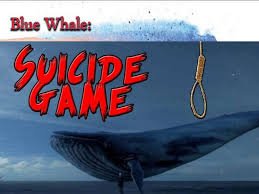Introduction
The internet is one of humanity’s greatest achievements. It connects people, spreads knowledge, and provides entertainment. Yet, alongside its benefits, it also carries hidden dangers. Among these dangers was a phenomenon that shocked parents, educators, and governments worldwide: the Blue Whale Challenge. More than just an online trend, it became a chilling reminder of how psychological manipulation combined with digital platforms can exploit vulnerable minds. This article explores the origins of the challenge, the alleged creator behind it, the risks involved, and the lessons society must learn.
Table of Contents
Deadly Truth: The Blue Whale Challenge on youtube
What Was the Blue Whale Challenge?
The Blue Whale Challenge was described as a fifty-day online “game” in which participants, usually teenagers, were assigned daily tasks by an anonymous “curator” or “mentor.” At first, the tasks seemed unusual but harmless: waking up at 4 a.m., watching horror films, or listening to particular music. Soon, the assignments escalated into self-harm, such as carving shapes on the skin or standing on dangerous ledges. The final task was reported to be the most horrifying: committing suicide.
While the exact structure of the challenge remains debated, the consistent pattern across reports was escalation. Each day, the participant’s resistance weakened. By the end, they were psychologically trapped in a cycle of fear, secrecy, and dependence on the manipulator behind the screen.

The Alleged Creator: Philipp Budeikin
At the center of the Blue Whale narrative stands Philipp (Filipp) Budeikin, a young Russian man. According to media coverage in 2016 and 2017, he was in his early twenties when arrested. Budeikin had once studied psychology but was expelled from his program. Later, he turned his attention toward creating online communities that allegedly targeted teenagers.
When confronted, Budeikin’s reported statements shocked the world. He allegedly described his victims as “biological waste,” claiming his aim was to “cleanse society.” Such chilling language revealed both arrogance and a lack of empathy. He believed he was providing direction to young people who were already vulnerable, though in reality he was exploiting their weaknesses.
Russian courts prosecuted him on charges related to inciting suicide among minors. In 2017, he was sentenced to over three years in prison. While the full extent of his role remains debated, his name became forever linked to the Blue Whale Challenge.
How the Game Spread
The Blue Whale Challenge reportedly began on Russian social networks such as VKontakte before spreading internationally. By 2017, stories of the challenge had appeared in India, Pakistan, Brazil, Turkey, China, and several European countries. In many cases, media outlets connected teen suicides to the challenge, sometimes without definitive proof.
This amplification fueled both awareness and panic. Parents were terrified, schools sent warnings, and governments rushed to ban related content. Unfortunately, the widespread publicity may also have contributed to the problem by sparking curiosity among young people. Some sought out the challenge simply because they heard it was dangerous.
Why It Was So Dangerous
The Blue Whale Challenge was not merely about risky tasks; it was about manipulation. Several psychological tactics made it especially hazardous:
- Incremental Commitment
The challenge started with small, seemingly harmless tasks. This gradual approach made participants less likely to resist later, more dangerous assignments. - Isolation
Victims were often instructed to cut themselves off from friends and family. This removed protective influences and increased dependence on the curator. - Blackmail
Participants were sometimes asked to send proof—photos or videos—of task completion. These materials could be used for threats, ensuring continued obedience. - Authority and Dependence
Teenagers struggling with loneliness or depression sometimes found comfort in the attention of the curator. What began as connection quickly turned into control. - Social Contagion
Stories of the game spread widely online. For some teens, simply reading about it created intrigue or the dangerous idea that participating might bring meaning to their lives.
The Role of the Media
The Blue Whale Challenge also demonstrates how modern media can unintentionally magnify harm. While raising awareness was necessary, sensational headlines often exaggerated details. In some countries, nearly every teenage suicide was quickly blamed on the challenge, even without evidence.
This sensationalism created what experts call moral panic. Parents were terrified, but teenagers became curious. Ironically, some young people may never have heard of the challenge until news stories highlighted it. In this way, excessive publicity may have contributed to further spread.
Was It All Real?
Critics argue that the Blue Whale Challenge was partly a myth—an exaggerated phenomenon born from a few real cases, opportunistic criminals, and a wave of media panic. Not every suicide linked to Blue Whale was proven to be connected. Some young people may have taken their lives for unrelated reasons, but the challenge became an easy explanation for grieving families and journalists seeking headlines. Nevertheless, dismissing it entirely as a hoax would be a mistake. The fact remains: at least some individuals, including Budeikin, deliberately manipulated teenagers online. Whether every detail of the “fifty-day game” was real or not, the consequences were deadly for some.

Lessons for Parents and Society
The Blue Whale Challenge is not just a dark chapter of internet history; it is also a warning. It highlights the urgent need for stronger awareness, communication, and preventive strategies.
- Communication is Key
Parents must build trust with their children. Teenagers should feel safe discussing online experiences without fear of punishment. - Recognizing Warning Signs
Sudden withdrawal, mood swings, self-harm scars, or obsession with disturbing content should never be ignored. - Guidance in Digital Spaces
Young people should be taught digital literacy—how to recognize manipulation, how to report suspicious activity, and how to stay safe online. - Community Support
Schools, NGOs, and governments should run awareness campaigns about online challenges and mental health support. - Timely Intervention
If a child expresses suicidal thoughts, professional help must be sought immediately. Removing access to harmful influences can save lives.
Broader Implications
The Blue Whale Challenge is very dangoures. It belongs to a wider category of online risks: viral dares, manipulation groups, and communities that glorify self-harm. In the years since, other harmful challenges have emerged. Each reminds us that technology is a double-edged sword: it can educate and connect, but it can also exploit and endanger.
At its heart, the problem is not the internet itself but human vulnerability. When loneliness, depression, or neglect leave a young person searching for meaning, dangerous individuals can step in with harmful influence. Society must therefore address not just the symptoms (banning games) but also the causes—mental health struggles, lack of support, and the silence that surrounds suicidal thoughts.
Conclusion
The Blue Whale Challenge stands as a disturbing symbol of the digital age’s risks. Its alleged creator, Philipp Budeikin, exploited psychology and technology to manipulate vulnerable teenagers. Whether every reported case was genuine or inflated, the lesson remains the same: young lives can be endangered by online predators if we fail to pay attention.
The responsibility lies with all of us—parents, teachers, governments, and peers. By fostering open dialogue, teaching online safety, and prioritizing mental health, we can build resilience against similar threats. The Blue Whale Challenge may have faded from headlines, but the vulnerabilities it exposed remain. Protecting the next generation requires learning from these mistakes and ensuring that no “game” can ever again lead children down a path toward self-destruction.
______________________
YOU MAY ALSO LIKE:
1. Maryam Mukhtar – The nation’s first best martyred aviator


